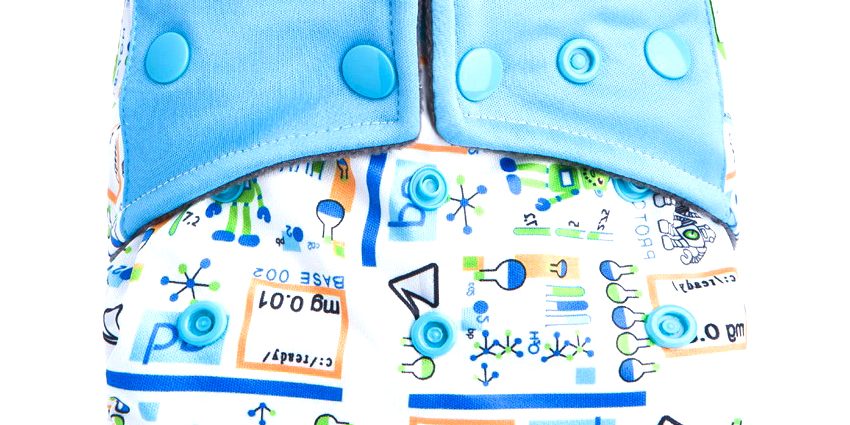This is the second article about modern cloth diapers. Read the first one here.
So you have tried a few all-in-one (AIO) cloth diapers and are comfortable with using them. And yet, it is time for the monsoons, the season for dampness. If laundry takes forever to dry, your shiny new Ikat print cloth diapers are taking even longer.
It may be time to consider some of the other types.
1.All-in-two (AI2) Cloth Diapers/Pocket diapers –  In these diapers, the absorbent layer is detachable. The diaper is made of an outer waterproof layer and an inner stay-dry layer and contains a pocket to insert a strip of absorbent material.
In these diapers, the absorbent layer is detachable. The diaper is made of an outer waterproof layer and an inner stay-dry layer and contains a pocket to insert a strip of absorbent material.
The inserts, also appropriately called ‘soakers’, are made of multiple layers of bamboo cotton, hemp or microfibre.
Pocket diapers are slightly easier to wash and dry, compared to AIOs. You can also choose to change the soaker depending on your needs. For instance, the same pocket diaper can have a thin microfibre insert when you want the diaper to be trim, and stuffed with hemp inserts for the night.
2.Fitted Diapers – These are simply diaper-shaped absorbent materials. They are neither waterproof nor do they have a stay-dry layer. In that sense, they are the exact opposites of pocket diapers.
Fitted diapers are useful when you are trying to potty train a child, because the baby usually cries or expresses discomfort because of the dampness. They also minimise messes and spills (though they do not eliminate them altogether, so watch out for your carpets, sofas, and expensive silks).
3.Prefolds –  For the veteran, prefolds are the best cloth diapers available. These are also the ones that will make grandmother snigger. They are simply rectangular pieces of cloth that you fold and pin on to your baby.
For the veteran, prefolds are the best cloth diapers available. These are also the ones that will make grandmother snigger. They are simply rectangular pieces of cloth that you fold and pin on to your baby.
If you want to go down a rabbit hole, look up Youtube videos on how to fold a prefold. You could embarrass your child as a teenager, by trying the komanam fold (and have your grandmother snigger even more). If you are feeling more kind towards your little tyke, you can try some diaper origami (the ‘angel fold’ is the simplest).
Unlike traditional cloth nappies, prefolds have extremely high absorbency. They also tend to be soft. Diaper rashes are almost never a problem (actually, rashes are rarely a problem with any type of cloth diaper). Washing and drying is also extremely easy. Prefolds can also be used as inserts in pocket diapers.
4.Diaper Covers – Diaper covers are simply made of a single waterproof layer. There is neither any absorbent material nor a stay-dry layer, so it is completely open to customisation. For instance, if your baby seems to be most comfortable with a layer of suede next to the skin but needs multiple layers of bamboo cotton to soak liquid, you could buy these two inserts separately and use them with a diaper cover.
Diaper covers can also be used with prefolds or fitted diapers, to retain the advantages of both.
The nice part of using a diaper cover with a prefold, for instance, is that you can quickly reuse the cover, simply by wiping it dry (especially if the outer layer is made of polyurethane), and letting it air for a bit.
That’s all you need to know, folks! If you have any questions (or simply many!??!!??! in your head), give us a ping, and we will try our best to help.
P.S. Sometimes, it takes a village to raise a child sustainably. Since that’s hardly possible, do consider co-opting at least one other adult – friend, family or paid help.







